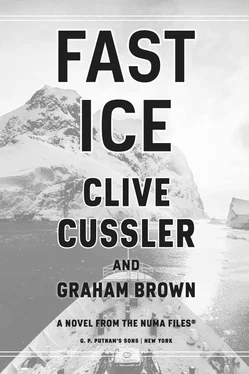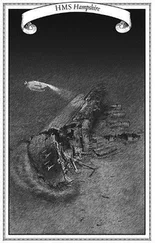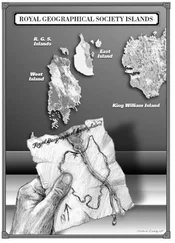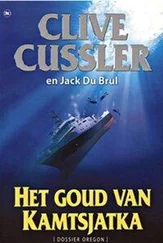Gamay slid closer, glancing at the monitor as Räikkönen explained the notations. “These ice cores were recovered in 1996 by a Swedish expedition. The samples run from a depth of three hundred meters—pardon me, you’re American—from one thousand feet to approximately six thousand four hundred feet below the surface.” He pointed to a notation on the file. “Here you can see the location on the glacier in latitude and longitude. And if I click here, I can you show the chemical breakdown based on depth.”
“This might be easier than we expected,” Paul offered.
Gamay shot Paul the look that said Don’t jinx us.
She turned back to Räikkönen. “Would you start with the deepest sections first?”
Räikkönen set a depth range on the screen before hitting enter on the keyboard. An icon appeared and cycled several times. Finally, a pair of words appeared. Gamay couldn’t read the Finnish, but a diagonal red line through the icon suggested something had gone wrong.
“How odd,” Räikkönen said. “The file has been corrupted. Let me check a different depth.”
Räikkönen pulled up several different depths at random and received the same notice in angry red letters. “The entire folder must be corrupt,” he said. “Perhaps it happened when we migrated from the old computer system to the new.”
As he went back to work, Gamay glanced at Paul, then back to their host. “Try a different sample,” she suggested. “Maybe one of the cores she looked at earlier in her visits.”
“Of course,” Räikkönen replied. He pulled up a second core by its identification number, double-checked that it was on the list of samples Cora had studied and requested the data. “Cora did the actual lab work on this one,” he said. “It had never been tested before.”
“Even though it was recovered in 1996?” Gamay asked.
“Oh yes,” Räikkönen said. “We have nearly two million core samples stored here. Each of them a meter in length. For proper examination, they need to be sliced into very thin sections and studied one millimeter at a time. In some ways, the EICD is like a library. There are books that get checked out on a regular basis and there are books that gather dust for years before someone takes a peek. But all of them sit and wait. The samples Cora studied hadn’t drawn much interest because they are from a less active part of the continent.”
As Räikkönen explained the process, Gamay watched the computer screen. The search icon appeared once again, cycling for what seemed like an eternity before finally giving way to the familiar notice in its angry red. “Another corrupted file.”
Räikkönen’s cheeks flushed. Without any prodding from Gamay, he pulled up three additional files, getting the same admonition each time. “I don’t understand.”
“I do,” Paul whispered, low enough that only Gamay heard him.
“What about the cores themselves?” Gamay asked. “Are they kept on-site?”
“The sections that haven’t been processed are.”
“Can we look at them?” Gamay asked. “I mean, physically look at them?”
Räikkönen nodded and went to work, studying the screen for the data. “We have two hundred cores from the ’96 expedition still in storage. Half of them from a depth below five thousand feet. They’re kept in the older building.”
“On-site?” Gamay said, standing up.
Räikkönen nodded. “You might want to put your coats back on.”
“Do we have to go outside?” Paul asked.
“No,” Räikkönen said. “But it’s thirty-five below in the warehouse. Fifty degrees colder than it is on the street.”
Paul grabbed his coat while Gamay grabbed hers and pulled on her earmuffs. “Should have bought that Russian hat.”
15
To reach the storage facility, Paul, Gamay and Räikkönen walked through a tube-like bridge that spanned the access road between the two buildings. It was enclosed but neither heated nor insulated. A chill could be felt as soon as they stepped inside.
Gamay looked out the half-frosted windows as they moved along. A small van with yellow fog lights was pulling in on the snowy road beneath them. “More deliveries?”
“They come in constantly,” Räikkönen replied. “Pardon the pun, but global warming research is heating up. That makes the EICD a hot spot. We now take ice cores from all around the world. We have some from Greenland and Antarctica, others from glaciers in South America, Eurasia and the Himalayas. We even have ice from Africa taken off the slopes of Mt. Kilimanjaro.”
They reached the far side of the bridge, arriving at a sealed door.
Räikkönen typed a code into a keypad and a hiss of air could be heard as the door opened. As cold as it was on the bridge, the air escaping from the storage chamber cut into them like the wind. They stepped inside and went down to ground level again, entering the locker room.
All around lay cold-weather gear. Fur-lined hats with earflaps. Racks of gloves. Coveralls on pegs along the walls.
“Let me see your gloves,” Räikkönen said.
Paul and Gamay held out their gloved hands.
“I’m afraid those will never do,” he said. “Find a pair of the heavy gloves and pull a pair of coveralls over your clothes. You’ll both want to drink a bottle of water as well. It’s exceedingly dry in the storage chamber, drier than any desert. You’ll never feel yourself sweating, but your bodies will lose moisture rapidly.”
Paul and Gamay did as they were told. Then, dressed appropriately, they passed through another door into an examination room.
Here they found a worktable with a precision saw waiting to carve ultrathin slices from the cores. Microscopes, gas chronometers and other high-tech equipment lined the far wall.
A woman dressed in cold-weather gear of her own stood over one of the microscopes.
“Good evening, Helen,” Räikkönen said.
She looked up from her work. “Matthias,” she said warmly. “I wasn’t expecting you tonight. What brings you down here?”
“Visitors,” Räikkönen replied. “These are the Americans I told you about. They’ve come all the way from Washington to see our work. As it turns out, they’re old friends of Cora Emmerson.”
“Cora,” Helen said. “How delightful. Where is she these days?”
Gamay answered quickly. “Antarctica.”
“Excellent,” the woman replied. “What can I do for you?”
“We’ve had a little problem,” Räikkönen said. “Several of the computer files seem to be corrupted.”
“I could retrieve the physical files for you,” Helen said, “but they’re stored at another site. It will take a few days.”
“That would be helpful,” Gamay said. “Out of sheer curiosity, we’d love to see some of the core samples Cora studied while she was here.”
“Of course,” Helen said. “Matthias, why don’t you show them? Assuming you can still find your way around the warehouse.”
“Very funny,” he said. “I’ve already got the bin numbers. We’ll go retrieve them. If you’d set up the exam table while we’re gone, that would speed things up.”
They left Helen behind and entered the storage facility itself. Astonishingly, this room was ten degrees colder than the exam room and dressing area. At this point, the difference in temperature really couldn’t be felt. What could be sensed was the dryness.
Each time Gamay inhaled, the air scratched her throat and windpipe. Her eyes felt as if they had been drained of all liquid. Either that or the tears were crystallizing in place.
“I see why we needed the water,” Gamay said.
Now out in the warehouse itself, they were dwarfed by three-story racks that reached to the ceiling, aisles of them, like a gigantic shopping center. On each of the racks were bundles of shimmering silver tubes. Thousands upon thousands of them stacked in cradles.
Читать дальше












